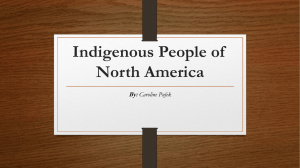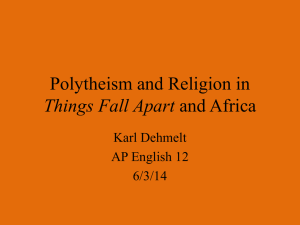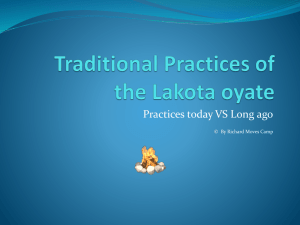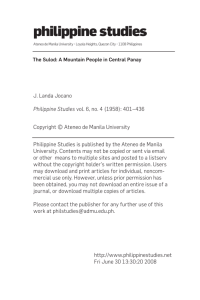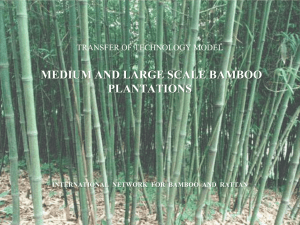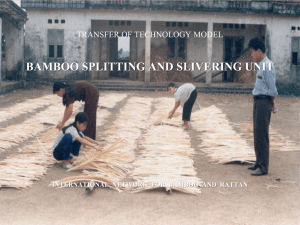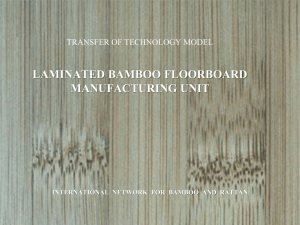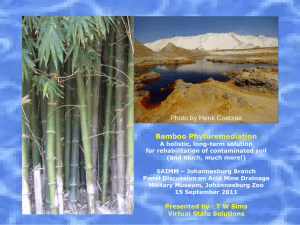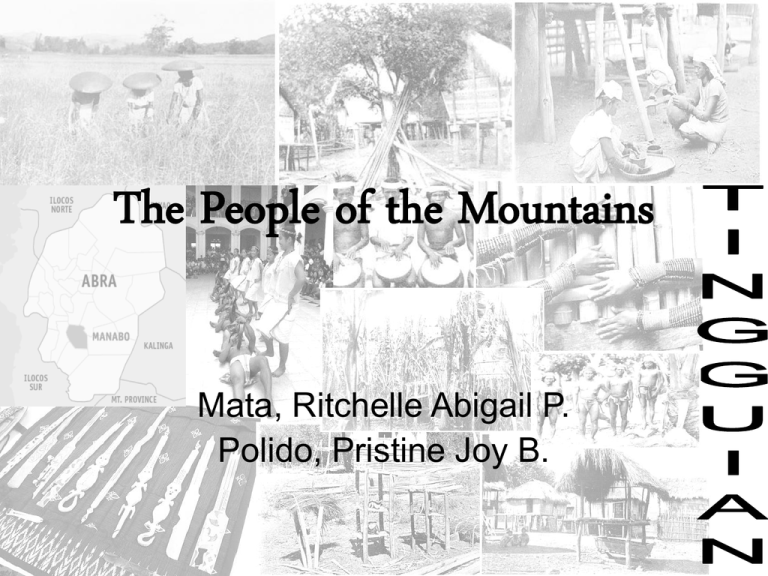
The People of the Mountains
Mata, Ritchelle Abigail P.
Polido, Pristine Joy B.
TINGUE
= mountaineers
Therefore, TINGGUIAN
means “the people of
the mountains”
ITNEG: Samtoy
(Ilocano) name for
tingguians
LOKASYON
Apay nga awan ti gobyerno da?
because their communities are
relatively small and easy to govern
They are peace-loving people.
council of elders: wields their authority
PANGLACAYEN: term used for elders
Anya ti itsura da?
Anya ti langa da?
SUBTRIBES AND THEIR SUBSISTENCE
Banaos: made their reputation in agriculture, deriving their livelihood
from what the soil yeilds. The Banaos are in municipalities of
Daguioman and Malibcong.
Masadi-its: nomadic in existence; the kaingeros in the tribe. The
Masadi-its are found in Manabo, Bucloc, Sallapadan and Boliney.
Maengs: ranchers found in towns of Tubo, San Isidro, Villaviciosa, and
Malibcong.
Mabacas: game hunters and fishermen. They are found in Lacub
and Malibcong.
Adasen: found in Dolores, Langilang, Sallapadan and Tineg
Balatocs: the Tingguian counterpart of the Tubo tribe of Mindanao wilds
for being the skilled craftsmen.
Crafts include:
carve mortars,
grinding stones,
cast bolos and similar impalements.
Binongans: summate romantics, they are carefree, they are more preoccupied with their guitars and musical instruments.
Other sub-tribes:
Adasen: found in Dolores, Langilang, Sallapadan and Tineg
Gubangs: found in Malibcong and Tayum.
Danak: relatively a small group, they are scattered throughout the
province of Abra.
Ang KOMUNIDAD
The Tinguian are familiar with the Igorot town, made up of several
ato but there is no indication that they have ever had such an
institution.
Generally consists of 2 – 3 settlements situated near each
other and under the authority of a LAKAY
LAKAY
Head of the village
is chosen by the older men
of the village, and holds his
position for life unless he is
removed for cause
usually a man past middle
age whose wealth and
superior knowledge have
given him the confidence of
his people
It is possible that, at his death,
his son may succeed him, but
this is by no means certain
In former times two or three villages would occasionally unite to
form a loose union, the better to resist a powerful enemy.
It is probable that the early Tingguian settlement consisted of
one or more closely related groups.
Even today the family ties are so strong that it was found
possible, in compiling the genealogical tables, to trace back the
family history five or six generations.
Families of means attain a social standing above that of their less
fortunate townsmen, but there is no sharp stratification of the
community into noble and serf.
Sometimes men act, dress and spend time with women. It is
believed that it is because during the spanish regime, they don’t
like to do road works.
POTA (..oops!)
The concubines, known as pota, are
deprived of certain rights, and they are
held somewhat in contempt by the other
women, but they are in no sense slaves.
They may possess property, and their
children may become leaders in Tingguian
society.
LAWS
Law, government, and custom are synonymous. Whatever the
ancestors did is right, and hence has religious sanction. The lakay
and his advisors will give their decisions according to the decrees of
the past, if that is possible, but when precedent is lacking, they will
deliberate and decide on a course. The following may be taken as
typical of the laws or customs which regulate the actions of the
people, within a group, toward one another.
Dagiti gundaway nga suruten iti pamilya
A man may have only one wife, but he may keep concubines.
If the wife's relatives suspect that a mistress is causing the husband's
affections to wane, they may hold the NAGKAKALONAN or “trial of
affection”, and if their charges are sustained, the husband must pay them a
considerable amount, and, in addition, stand all the expenses of the
gathering. If it is shown that they are not justified in their suspicions, the
expense falls on the accusers.
A man who has a child by an unmarried woman, not a pota, must give the
girl's people about one hundred pesos, and must support the infant. Later
the child comes into his keeping, and is recognized as an heir to his estate.
Incest is prohibited. It is said that offenders would be cut off from the
village; no one would associate with them, and their children would be
disinherited.
A widow may remarry after the Layog ceremony, but all the property of
her first husband goes to his children.
Culture and Tradition
MEN’S ADORNMENT
wears clout (ba-al), either of beaten bark or of cloth, and a woven belt
(balikᴇs) in which he keeps small articles.
On special occasions, a Tingguian wears a long-sleeved jacket (bado),
open in front, and in a few instances, trousers.
The man is not inclined to adorn himself with brass and gold, neither
does he use tattooing to any extent, as do his Kalinga and Igorot neighbors.
Some have small patterns on an arm or thigh, but these are usually
property marks with which he brands his animals or other possessions.
Tattoo marks: not considered an evidence of a successful head-hunt,
nor are there other marks or garments to identify the warriors.
bark band (ayabong): holds the hair in place, but at times it is
replaced by a cloth or a narrow ring of interwoven grass and rattan.
Round bamboo hats, with low dome-shaped tops, are commonly
worn, but these are sometimes displaced by hats which go to a sharp peak, or
by those made of a gourd or of wood.
WOMEN’S
ADORNMENT
hair:
adorned by strings of beads
often washed with the ashes of rice-straw, or with the bark of the gogo tree
(Entada purseta), and is moistened with coconut oil.
Strings of beads encircle the women's necks, but typical ornaments are the arm bands
Most of the women have their ears pierced, but in the valley towns only a small
proportion wear earrings. In the mountain sections heavy ornaments of gold or copper
are worn, the weight often drawing the lobe of the ear far down on the neck.
When at work, the woman discards all clothing from the upper portion of her
body, but at other times wears a short-sleeved jacket which reaches to her waist.
A narrow skirt (dingwa), with colored border, extends from the waist to the
knees. It is held in place by drawing it tightly and then tucking one corner under the upper
edge, or by pressing it beneath the girdle.
girdle (palingtan): used by a Tingguian girl when she becomes a woman
a braided grass or rattan which fits over the hips, and to which a clout is attached. As a
rule, the girdle and clout are not removed when bathing, as are the other garments.
The teeth of both sexes are blackened with iron salts
and tan bark, but they are not cut or mutilated, as is
common with many Philippine peoples.
īming: a bamboo device used to pluck facial and body
hairs consists of a section of bamboo split into
several strips at one end. A hair is placed in one end
of the slits, and the bamboo is bent into a half circle,
causing it to take a firm hold, when it is jerked
outwards.
paliget: prized necklace made of small strands of
twisted silver wire placed on the neck of a corpse,
and on some occasions are worn by the living.
Musika’t Sayaw
DANCES
Da-eng: the ceremonial dance, takes place at night, and is carried on to the
accompaniment of a song.
the steps of the dance, at first slow, becomes faster and faster till the
dancers have reached the limit of their vocal and physical powers.
sacred in character
however, it sometimes happens, when the basi has been flowing
freely, that the participants become so boisterous and the pace so fast that
spectators are run down or the dancers are piled in a heap, from which they
emerge laughing and shouting
Tadek: the common dance, is a part of nearly all gatherings of a social and
religious nature.
The music for this dance usually is made with three gansas and a
drum. The gansas are pressed against the thighs of the players who kneel on
the ground. Two of the coppers are beaten with a stick and the palm of the
hand, while the third is played by the hands alone
BURIAL RITES
Akosan: A prized shell, with top and bottom cut off, is
slipped over a belt-like cloth. Above it are a series of
wooden rings and a wooden imitation of the shell. This,
when hung beside the dead, is both pleasing to the
spirit of the deceased, and a protection to the corpse
against evil beings.
MARRIAGE
traditionally called a "Boda“
Dowry is an inevitable feature, and weddings are often
characterized by lengthy** and prolonged celebrations.
**The longer the more prestigious.
Cows, carabaos, goats, dogs, deer, wild boar, and chickens
are slaughtered for feasting of the entire populace.
Basi, local wine made from sugar cane, is also given for
special occasions.
RELIGION
Revolves around beliefs pertaining to creations and superstitions centering
on anito
Anito: an omnipotent being which exercises absolute control over
human kind.
Bagatulalyan: regarded by Tingguians as their supreme god who has:
absolute control over the behavior of his subjects and
power to punish anyone who disregards his laws and commands.
Kadaklan: second to Bagatulalyan who enforces decrees of Bagatulalyan
Kabonian: third-ranked Tinnguian deity, who is the benevolent one.
GREAT CEREMONIES: can only be given by those who have the hereditary
right, or who have gained the privilege by a certain definite procedure
In general these ceremonies are restricted to the villages in or close to the valley of
the Abra, the lower reaches of the Tineg, Malanas, and Sinalong rivers.
1. Sayang: the greatest social and religious event in Tinguian life extends over
seventeen days and nights, occurring after the time of harvest
This supreme event can only be celebrated by a few families, but all the
townsmen are welcome guests, and all, regardless of age and sex, may witness
or take part in the proceedings.
In most cases the right is hereditary, but, as already indicated, a person
may gain the privilege by giving, in order, and through a term of years, all the
minor ceremonies.
A person who does not have the hereditary right to the ceremonies
may gain the liberty if he be warned in a dream or be notified by the spirits that
it is their wish.
Alalot: Two arches of bamboo, which support a grass roof. A small jar
of basi stands in this structure for the use of visiting spirits. Is generally
constructed during the Sayang ceremony
Pala-an
2.
: held when some member of the family is ill, or when the
structure of that name needs repair.
Many spirits visit the people during this rite, but the one chiefly
interested is Īdadaya, the spirit of the east. He and his ten grandchildren wear in
their hair the notched tail-feathers of a rooster, which are known as īgam. From
time to time these lose their luster, and they can only be refreshed by having
some mortal celebrate Pala-an.
When it appears that these ornaments need attention, the Īdadaya will
notify some family, either through a medium or by sending illness to them.
Pala-an: Four long poles, usually three of bamboo, and one of a
resinous tree known as anteng are set in a square and support, near the top, a
platform of bamboo. Offerings are made both on and below the Pala-an during
the ceremony of that name, and in the more important rites.
3. Tangpap: only a part of Sayang, but in Manabo, Lagangilang, and nearby
settlements it is recognized as one of the ceremonies
must be celebrated before a family acquires the right to Sayang. In
these villages it follows Pala-an after a lapse of two or three years.
A Manabo woman, the wife of Sagasag, was seized with an illness
which deprived her of the use of her limbs, and when other means of relief
failed, was told by the spirits to give the Tangpap ceremony, to which she
already had a hereditary right.
A medium was summoned, and she, with two assistants, began to
prepare many presents for the spirits who were expected to attend the
ceremony. From previous experience it was known the sort of gift each would
appreciate.
As a rule, three spirits named Mabᴇyan attended this ceremony.
4. Kalangan: a period of about seven years elapses between the building of
tangpap and the celebration of Kalangan, but in most of the valley towns the
latter ceremony follows Pala-an after two or three years
The ceremony is so similar to the Tangpap
The chief difference in the two is the type of structure built for the
spirits. Kalangan has four supporting timbers to which the flooring is lashed,
and from which kingposts go to ridge poles. A bamboo frame rests on this and,
in turn, supports an overhanging grass roof.
Kalangan is much more widespread than either Tangpap or the
Sayang ceremony, and this spirit structure is often found in villages, where the
other great ceremonies are lacking.
SPECIAL CEREMONIES: do not have a wide distribution, neither
are they hereditary
1. Pīnasal: This rather elaborate rite seems to be confined to San Juan and
nearby settlements. The right to it is not hereditary, and any one who can afford
the expense involved may celebrate it.
The house is decorated as in Tangpap and Sayang; a bound pig is placed
beside the door and over it the mediums recite a dīam and later summon several
spirits. Liquor is served to the guests, who dance tadek or sing songs in praise of
the family.
The pig is killed and, after its intestines have been removed, it is
covered with a colored blanket, and is carried into the dwelling. Here it is met by
the mediums who wave rain coats above the animal, and then wail over the
carcass.
“The pig and its covering are in part payment for the life of the sick person. They
cry for the pig, so they will not need to cry for the patient.” Later the pig is cut
up and prepared as food, only the head and feet being left for the spirits.
Binikwau
2.
: This ceremony, like the one just described, seems to be limited
to the San Juan region, and is given under similar circumstances.
The room is decorated as usual, and a bound pig is laid in the center.
This is known as “the exchange,” since it is given in place of the patient's life.
Two mediums place betel-nut on the animal, then stroke it with oil,
saying, “You make the liver favorable,” i.e., give a good omen.
The pig is killed early next morning, and its liver is eagerly examined to
learn whether or not the patient is destined to recover. A part of the flesh is
placed on the house rafters, for the use of the spirits, while the balance is cooked
and served.
The final act is to scrape up a little of the liver with a small head-axe,
and to place this, mixed with oil, on the sick person.
REFERENCES
Nid Anida
Death of Culture Encyclopedia of the
Filipino People
End. THANKS!

